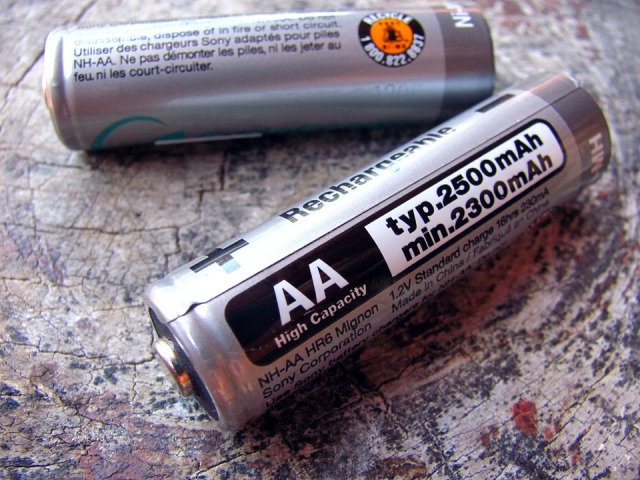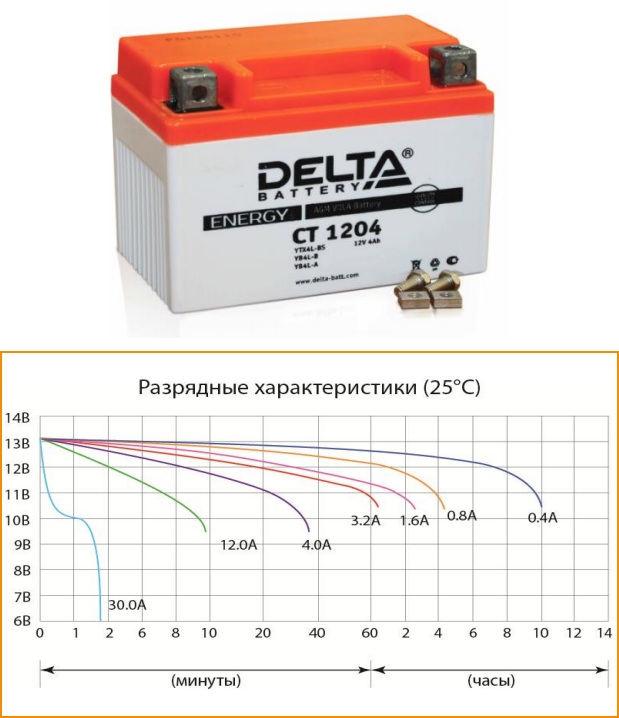Categories: Featured Articles » Interesting Facts
Number of views: 10952
Comments on the article: 2
What is battery capacity and what does it depend on
Looking at the markings of any modern battery, whether lithium ion cell phone battery or a lead-acid battery from an uninterruptible power supply - we can always find there information not only about the rated voltage of a given power source, but also about its electric capacity.
Typically, these are numbers like: 2200 mAh (read as 2200 milliampere-hours), 4Ah (4 ampere-hours), etc. As you can see, a non-system unit of measurement - Ah (Ampere hour) - “ampere- hour ", but not" farad " as for capacitors. And the clock here does not appear for a reason, but for the reason that a regular battery, unlike a conventional capacitor, is able to power the load literally for hours.

If you try to explain quite simply, then the battery capacity in amp hours Is a numerical expression of how long a given battery can power a load with a specific current consumption.
For example, if a battery with a nominal voltage of 12 volts is fully charged, while it has a capacity of 4 Ah, then this means that a load with a consumption current of 0.4 amperes, with a nominal voltage of 12 volts, this battery will be able to supply for 10 hours until a condition occurs in which its further discharge becomes dangerous for performance. And through a load with a consumption current of 1 ampere, the same battery will be discharged for 4 hours (theoretically, of course).
Of course, for each battery there is a limit on the maximum permissible discharge current, and the higher the discharge current, the lower the linearity of the discharge characteristic will be, and the faster the battery will run down compared to the estimated time.

The minimum allowable voltage to which the battery can be discharged is also regulated and always indicated in the documentation for a specific battery, as well as the maximum safe voltage above which it is very undesirable to charge the battery.
For example, typical for a 3.7-volt lithium-ion battery, the maximum allowable minimum discharge voltage is 2.75 volts, and the maximum is 4.25 volts. If you discharge a lithium battery to less than 2.75 volts, the battery will begin to lose capacity, and if you recharge it beyond measure, it may explode.
For a 12 volt lead-acid battery, the extremely safe minimum is 9.6 volts, and the maximum to which you can charge is 13 volts, etc.
As you can see, in the capacity information (in ampere-hours) volts are not mentioned at all. And meanwhile, if you translate the hours into seconds, and then multiply the value of the capacity by the battery voltage, then we get the value of the charge energy of this battery in joules:

One way or another, the capacity of a working battery is practically independent of the voltage at its terminals at the current moment. But when we say “battery charge”, we mean not the capacity, but just the voltage to which the battery is now charged. If the battery is charged to the rated voltage, then you can count on the capacity that the battery has at that moment. If the battery is discharged, then its capacity does not matter.

In this case, the actual battery capacity, as can be seen from the family of discharge characteristics, strongly depends on the value of the discharge current. A 10-hour discharge and a 10-minute discharge, for example for a lead-acid battery (see the figure above), will show a difference in capacity of about half!
An even more or less exact mathematical relationship between the discharge current and the discharge time can be found. one or another instance of the battery. This dependence was revealed by the German scientist Peikert, and introduced the so-called "Peckert coefficient" p, which, for example, for sealed lead-acid batteries is in the region of 1.25. The higher the discharge current, the shorter the discharge time. And the constant on the right side of the equation - it directly depends on the nominal capacity of the battery.
If desired, the actual battery capacity can be determined very simply: fully charge the battery (to the maximum allowed voltage, which is indicated in the documentation), and then discharge it with direct current (close to the 10-hour discharge characteristic from the documentation) to the final discharge voltage (which is also given in documentation). Multiply the discharge current and discharge time in hours - you get the actual battery capacity in amperes or milliampere-hours.
See also at i.electricianexp.com
:
